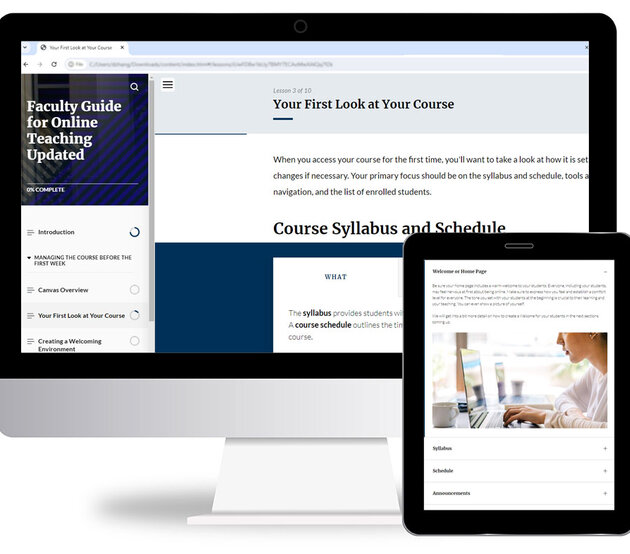This self-paced course offers a comprehensive approach to creating an inclusive, engaging, and practical teaching experience focused on student success.

Facilitating and teaching an online course involves several key best practices and expectations to ensure an effective and engaging learning experience. These include:
- Clear Communication: Providing clear instructions, expectations, and guidelines for participation, assignments, and assessments to students.
- Accessibility and Inclusivity: Ensuring that course materials and activities are accessible to all students and promoting an inclusive learning environment.
- Interactive Engagement & Social Presence: Facilitating active engagement and participation through discussions, collaborative activities, and feedback mechanisms promotes social presence.
- Timely Feedback: Providing prompt and constructive feedback on assignments and assessments to support student learning and progress.
- Technology Proficiency: Demonstrating proficiency in using the online learning platform and other technology tools to effectively deliver course content and engage with students.
- Flexibility and Adaptability: Being flexible and adaptable in response to student needs, technological issues, and unforeseen circumstances.
- Support and Resources: Providing resources, support, and guidance to students to help them succeed in the course, including access to technical support and academic resources.
- Professionalism: Maintaining professionalism in all interactions with students and colleagues, including timely responses to emails and respectful communication.
By following these best practices and expectations, you can create a positive and enriching online learning environment that fosters student success and engagement.
Explore Further

Communicating with students

Creating instructor presence

Providing feedback




